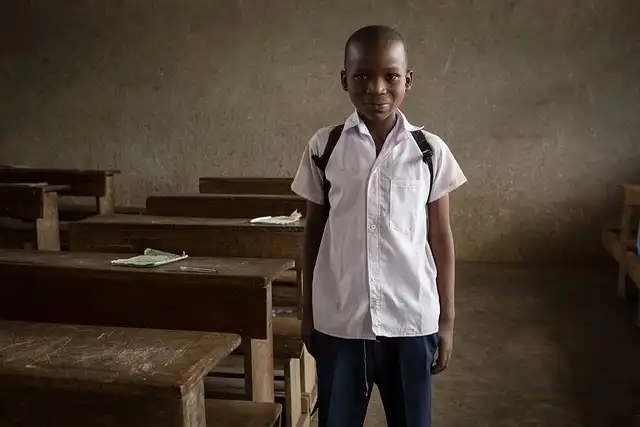
The searchings for emphasize that the problems vital to young voters in general prove out with many enlisted in higher education, as well as exactly how establishment kind and demographic aspects can affect patterns among college students.
The break down in between personal and public college students highlights exactly how those that “have and have not,” consider problems differently, Monroe claims. “Private school pupils consider the world in a different way and they take a look at college in a different way” because they are a lot more financially protect.
“The future of freedom, to me, suggests protecting the civil liberties of all people in this nation,” McRoberts states. College pupils, as a populace, are significantly diverse and represent a variety of histories and lived experiences. To chosen officials, they continue to be filtered into 2 classifications: college versus no college or the 18- to 25-year-old populace, Monroe states.
In regards to problems voters care about, “when in doubt, the economy is often at the high-end of the checklist,” says Billy Monroe, a government professor at Savanna View A&M College in Texas. This particularly rings true during economic crisis or high rising cost of living.
“What I tell my trainees regularly, if the 18- to 25-year-old populace enacted ways that are expected of those 65 and older, the government would be far more responsive to their desires,” Monroe says, referring to plan concerns amongst elected officials.
Only 11 percent of students suggest the Israel-Hamas battle is a leading concern for them, yet 7 extra students mention Palestine and Gaza in “other” feedbacks, and five students consist of international events and global plan as an additional issue.
A lot more current information from the National Culture of Secondary School Scholars, which polls recent graduates and high schoolers, found the economic situation, health care, females’s civil liberties and the setting are important to younger voters.
Breanna Denaye McRoberts, a junior at Prairie View A&M, believes the study results are less depictive of how students really feel concerning the conflict in Gaza. I have discovered that it is an offer breaker for some trainees to decide that they elect for.”
Among complete respondents, 8 percent pick more funding for greater ed as a significant problem they care about; Hispanic students (12 percent) neighborhood college students (11 percent) are more likely to place this as a top priority.
What matters to pupils: The No. 1 concern across participants is the economy/cost of living (52 percent), with grown-up learners (61 percent) and male students (59 percent) determining this issue the most.
Monroe hypothesizes students could rank diplomacy concerns higher if there was much more straight U.S. participation; both problems, in between Ukraine and Russia and Israel and Hamas, can feel distant for the ordinary college student unless they have an ethnic or personalized tie to the events.
As a teacher at a historically Black university, Monroe isn’t stunned to see Black pupils’ leading concerns, and that pupils throughout school share comparable beliefs. He marvels, however, by just how reproductive rights rank across learners.
A national photo: The Spring 2024 Harvard Youth Survey, carried out by the Harvard Public Opinion Job, discovered a majority of young adults (identified as ages 18 to 29) in the U.S., similarly, identify inflation (64 percent) as a leading concern, along with health care (59 percent), housing (56 percent), weapon violence (54 percent) and tasks (53 percent).
“The future of democracy, to me, indicates securing the legal rights of all people in this country,” McRoberts says. “The future of freedom is something that worries me. We are a diverse nation, indicating everyone has different demands, and also if I might not need a solution or safety net, it must still be offered to those who do.”
Breanna Denaye McRoberts, a junior at Prairie Sight A&M, assumes the survey outcomes are much less depictive of exactly how students really feel concerning the dispute in Gaza. “The majority of my peer group agree that what is taking place in Gaza is vicious and has taken place also long. If anything, I have actually observed that it is a deal breaker for some students to choose who they elect.”
A September survey of 1,012 students discovered, throughout the majority of groups, the economy/cost of living is one of the most vital issue in determining whom or what pupils will certainly vote for in the upcoming election, with 52 percent of respondents picking that.
Private school trainees are most likely to place social problems as important, consisting of the future of freedom (36 percent), ecological issues (26 percent) and the Israel-Hamas war (19 percent), contrasted to public college students, of whom 23 percent think about the future of freedom a leading problem, 18 percent ecological issues and just 9 percent Israel-Hamas.
A Might GenForward survey by the University of Chicago discovered youths think economic growth, income inequality and the public debt, were the most vital issues encountering the U.S. today. In their communities, young people rank income inequality and economic development as leading concerns, as well as poverty, high taxes and homelessness.
Contrasted to their peers, Black students place racial justice and civil liberties issues greater (41 percent, or third over all), and Hispanic pupils recognize weapon violence/control (31 percent, or 3rd over all) as more vital.
The survey was conducted by Inside Greater Ed and Generation Laboratory and fielded in late September with an overall of 1,012 responses. The sample includes over 760 four-year and 230 two-year university student, along with 329 post-traditional trainees (participating in a two-year establishment or 25 or older in age) and 518 low-income students.
What? University student, as a populace, are progressively diverse and represent a selection of backgrounds and lived experiences. To elected officials, they continue to be filtered into 2 categories: college versus no university or the 18- to 25-year-old population, Monroe claims.
1 helping students accelerate2 issues
3 percent
« Saint Louis University lays off 23 staffers, eliminates 130 positionsHow college leaders can articulate higher education’s ROI — beyond earnings »
